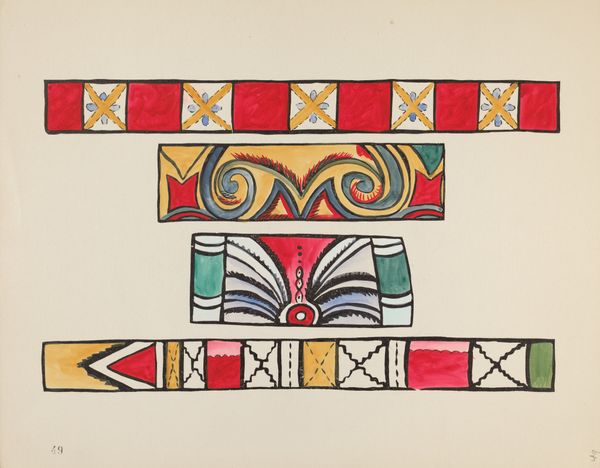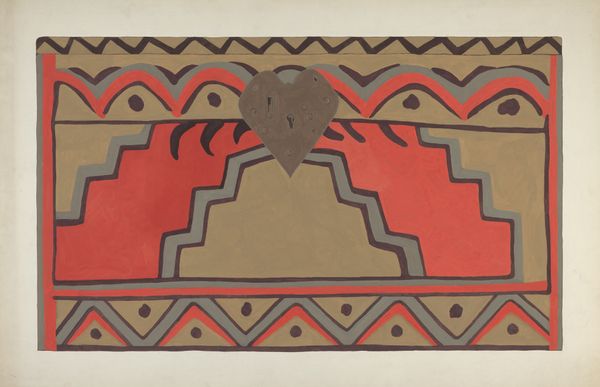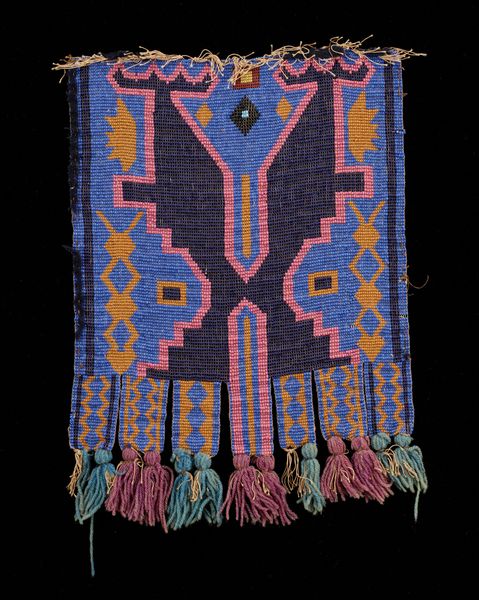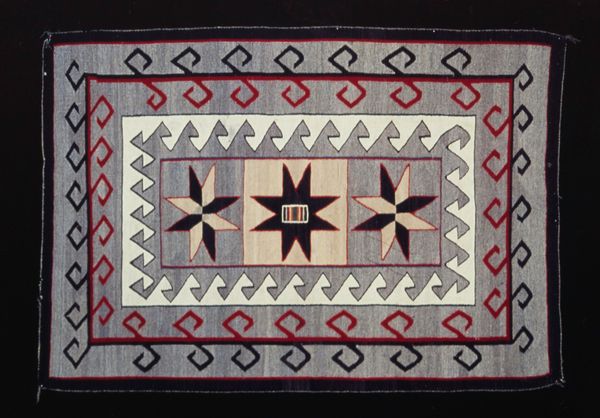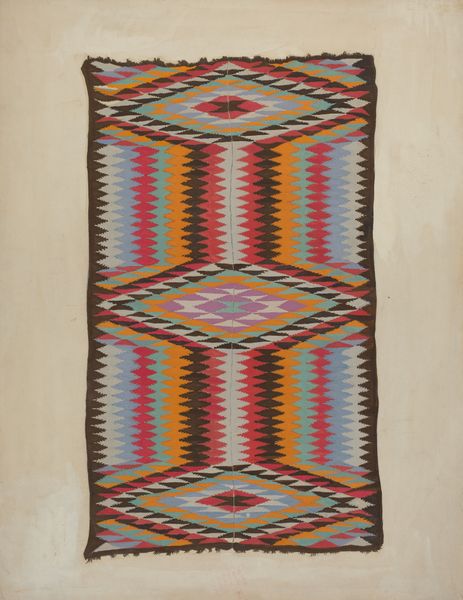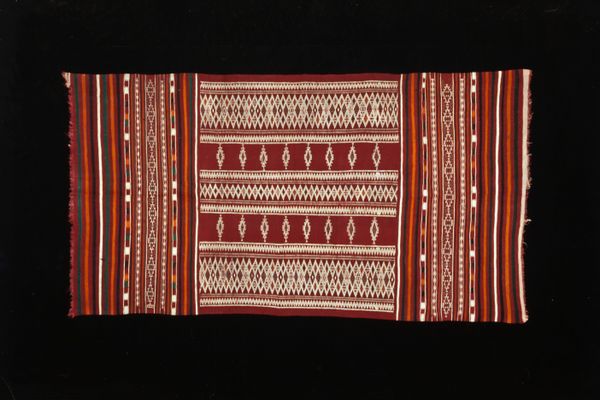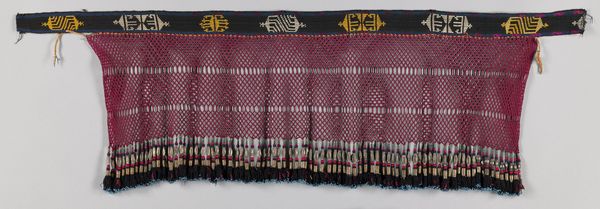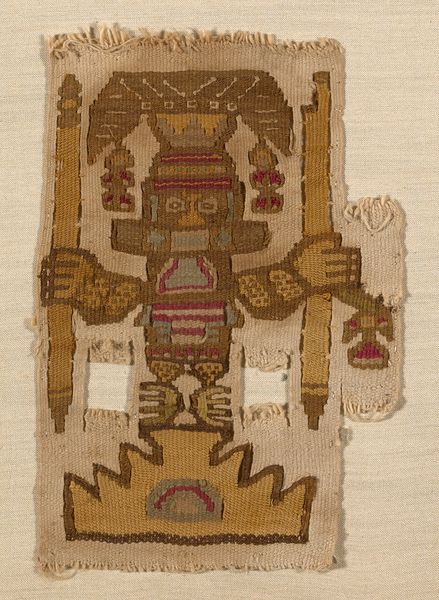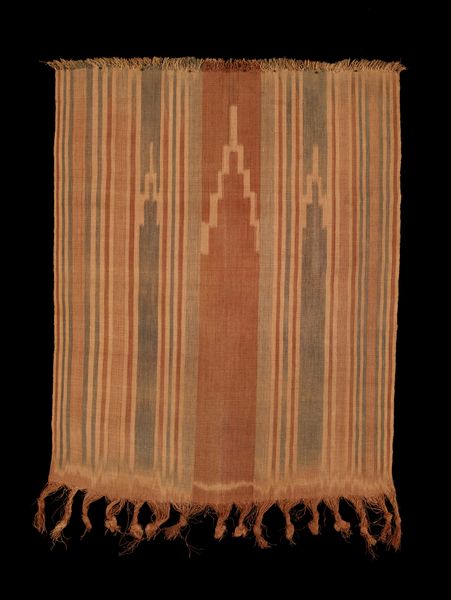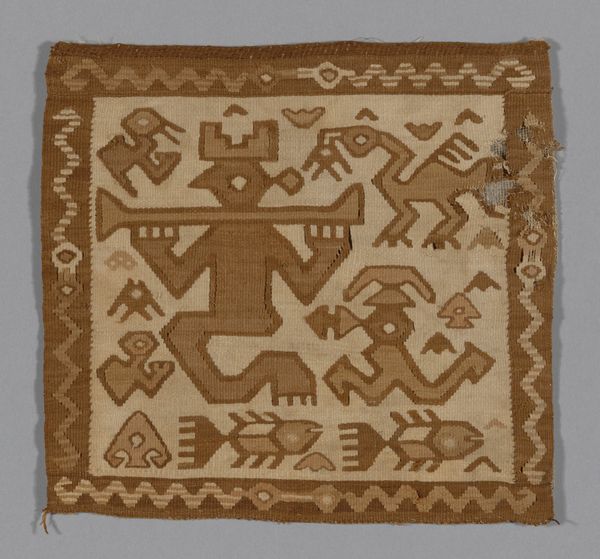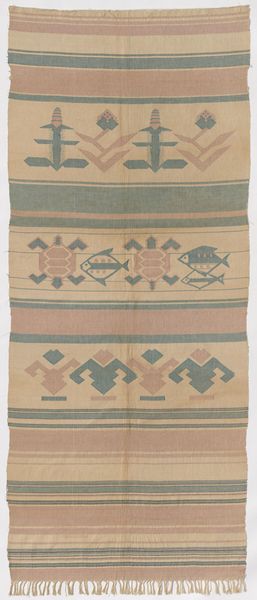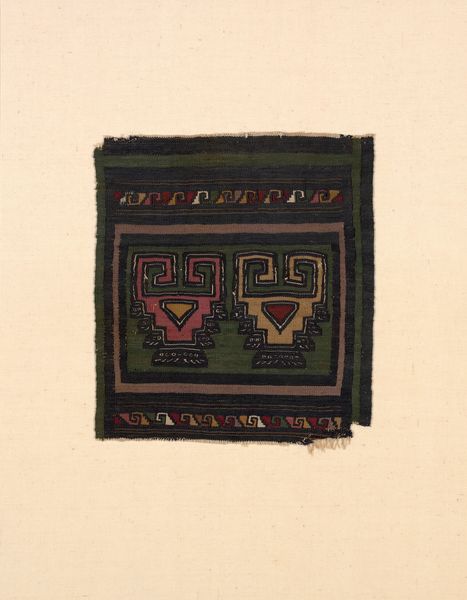
Dance Blanket with Diving Whale and Raven Motifs c. late 19th century
0:00
0:00
fibre-art, weaving, textile
#
fibre-art
#
weaving
#
textile
#
geometric
#
decorative art
#
indigenous-americas
Dimensions: 176.1 × 138.5 cm (69 1/4 × 54 1/2 in.)
Copyright: Public Domain
Editor: Here we have an example of Tlingit fibre art. This Dance Blanket with Diving Whale and Raven Motifs was created in the late 19th century. Made with such precision and care, I'm struck by how these geometric forms seem to suggest faces, and creatures – but abstracted. What can you tell us about the imagery at work in this piece? Curator: Notice how the figures of the whale and raven are not represented naturalistically, but are instead constructed through a system of symbolic forms. These forms carry significant cultural weight. Consider the raven: throughout Northwest Coast cultures, Raven is a central figure, a trickster, creator, and transformer. His image, when seen on this blanket, wouldn't just depict a bird, but would immediately trigger a complex network of narratives and beliefs within the community. Editor: So it's like a visual shorthand? A way to communicate complex stories and ideas without depicting them literally? Curator: Precisely! And the whale? What does the whale evoke for you in this context? Editor: Thinking about the blanket's purpose, dance, I imagine the whale is not only a display of clan identity and prestige, but perhaps, with the raven, part of a visual story told through movement. Is it also important that the weaving translates across generations? Curator: Absolutely. Through continuous reproduction and stylization of certain symbolic forms, they reinforce a cultural memory and identity. It is the transmission of knowledge embedded in these repeating motifs that provides a sense of continuity, anchoring the community to its past and present. What new ideas are you leaving with? Editor: It’s clear now that even abstracted shapes on art like this blanket can symbolize the power of history, continuity, and community identity. Thank you!
Comments
No comments
Be the first to comment and join the conversation on the ultimate creative platform.
